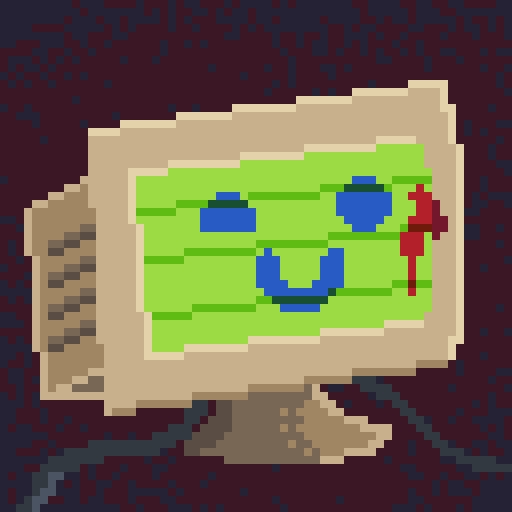I’m planning on building a PC soon and, while I have done plenty of research, I’d like to hear advice from people who have experience in the area personally. It’s also just nice talking to other people in general, lol
I would absolutely use “PC Part Picker” because as you assemble the various components, that site will tell you if there are incompatibilities. For instance whether a power supply will fit in the case.
And if you don’t have someone to bounce ideas off of, this is a pretty good site that was recommended to me to help narrow your choices.
I second Logical Increments, it’s great.
deleted by creator
Don’t skimp on the power supply brand. Buy a reputable one. Buy one with headroom if you plan on upgrading your GPU at a later time.
Watch some build videos from tech YouTubers and watch the steps they go through.
For gaming start with the GPU and build around it. Pick a CPU with a reasonable price that will not bottleneck it. YouTube reviews are your friend here. Watch a few with your CPU and GPU pairing and get an idea of the average and one percent low marks.
For your first PC, stick to air cooling. Pick a reputable brand.
I personally like gamersnexus reviews for all the parts you can. They are very methodical with benchmarks. Ask questions here as you will have many.
You may be building a PC for a use case other than gaming. If that’s the case you may want to pick another part to start your build around. For instance, developers have a different workload compiling code and would focus more on CPU and threaded workloads.
Basically know your use case, budget, and ask specific questions as you learn from videos and the community will help you produce a great result.
Save everything that comes in your motherboard box. Don’t be the fool (me) who needs to buy m.2 screws on Amazon.
I end up saving everything from every box, haha. I still have all the cords from my modular PSUs sitting in my basement, still in their little bags
Related, don’t throw away any packaging until you’re done with the build. Sometimes they hide parts in non-obvious places (e.g. little recesses in the styrofoam).
Don’t forget to buy thermal paste!
Most coolers come with it preapplied these days, but it’s still good to have in case you need to reseat your cooler.
Also don’t forget to remove the plastic film(s) they put on the CPU/Cooler and everywhere else!
I highly recommend PC Partpicker for compiling all your components (although I don’t typically follow the listed purchase links). The comparability checker it has can save some real headaches!
Otherwise, some general advice:
-
Remember the motherboard standoff screws. Most cases these days have them pre-installed, but my first rig did not. And I bent the mobo a little bit before realizing my mistake. It still worked in the end, but it’s now my #1 cautionary tale about PC Building.
-
Do yourself a favor, and make an attempt at proper cable management. It’ll make replacing components so much easier down the line.
-
Get a fully modular PSU (if in your budget). This will help with #2 above immensely.
-
Read the manual that comes with your motherboard. It usually has a lot of guidance for assembling the computer, especially if this is your first time.
-
Have fun! PC Building/Gaming is one of my favorite hobbies, and I’m always glad to see new people getting interested in it!
Good luck, and don’t be afraid to ask questions!
This is all spot on advice. The motherboard and case manual should be open and nearby as you build the pc.
-
Slightly different advice from what others have said, but while building it, I’ve always used an anti static wristband, grounded to either ground or the pc case. Maybe I’m overly paranoid, but that’s what I was taught, and haven’t had any issues with ESD so far
You really can’t go wrong with https://pcpartpicker.com/. Obviously double check things like GPU size mentioned below, and up size your PSU if you ever intend to upgrade GPU in same case. 850 Watts is a solid choice regardless of what your current picks need.
Buy more than you need, is the lesson I’ve learnt. Especially power, I have an 850 as well, but I sort of wish I bought a 1000W, the way things are going.
5950x with 7900xtx runs fine on my 850 watt.
For sure, I run an 5800x3d and a 4070ti on a 850, but I had to replace the 650 that I built with in 2020 to do that. Two power supplies in three years could have been averted if I had just bought a bit more than I needed the first time. It sucks having to completely rewire an already built computer too.
On the other hand, I bought a beefy power supply in my last rig based on advice that I’ll want room for upgrades, but I never did. It’s not really of interest to me to fuff around with upgrades.
As a patient gamer, by the time my rig isn’t able to handle modern games, it’s time for a completely new build.
Also, I care a lot about noise (and thus heat), so I’d rather keep my entire build’s thermal profile low, using lower-power components.
My new build, I only included enough extra power for some extra HDDs (including extra overhead for power spikes).
There’s not too places you can damage things when installing, but I think the most understated one is the USB 3.0 header that you connect from the case to the motherboard. The plug is super tight and very difficult to remove once you put it in, so I recommend only plugging it in once you’re ready to start using your machine. I know too many stories of people breaking it and not being able to plug in USB devices to the front of their PC case because of this.

https://pcpartpicker.com/ or https://pcpartpicker.ca if you’re Canadian is very helpful for drafting up a build or shopping for parts, specially if you’re a newbie. You can even find recommended builds on there.
Lota of great advice here but my must have is a tray to put all the screws and other small bits. Far too easy to lose stuff. iFixit do a good one but you can find an equivalent lying around im sure.
If you can, just pick the parts but don’t build it yourself, ask a friend who knows what he’s doing and watch or pay for it. You really really don’t want to screw it up with these GPU and CPU prices.
I would, but unfortunately I don’t know anyone with experience in this area. But I won’t be doing it by myself, and I’ve done quite a bit of research, so I at least think I won’t mess up to the point of breaking anything
The site from which you buy your components doesn’t offer you to pay for assembly ?
No, sadly. Besides, I don’t know if I would go with that option even if it was. I’ve been wanting to build my own PC for a while and I am willing to run the risk, although it would be nice to have somebody with experience help
It’s fairly safe to just do it yourself. Simply be aware you don’t have to force anything too much. Pushing the ram into the slots is likely the most force you need. Even if you get something wrong as long as you didn’t apply to much force and break some pins you can just reseat it and try again.
CPU is the one you’re most likely to mess up but that takes virtually no force at all. If you’re using basically any force, stop and turn it because you clearly don’t have it lined up correctly. They should drop in and then lock into place.
If building it is of interest to someone I think anyone can do it. If you don’t know, just stop a check a youtube video but these days it’s fairly easy to do and virtually impossible to plug anything into the wrong spot.
I’ve found that the motherboard is often the make or break item with PC builds. Pay attention to how many 1 star reviews there are on Amazon or wherever, I think they tend to suffer from poor quality control.
Putting everything together is basically just expensive legos.
As others have mentioned, definitely make sure you are using the motherboard stand-off screws, or that it comes with them pre-attached.
For RAM, it can really only go in one way but it’s a little terrifying when it audibly snaps into place.
If you get everything set up and it doesn’t turn on, first thing I always check is that the RAM is seated properly (motherboard may have recommended configuration depending on the number of RAM sticks).
Make sure you plug your monitor into your GPU, not your integrated graphics from the motherboard.
If you get stuck at any point or have questions, feel free to reach out :)
I’ve put together ~4 computers, 3 in small form factor cases and 1 in a normal sized case. Definitely recommend a modular PSU, and also using cable ties (the Velcro ones that are easy to remove) of some kind for cable management.
Before mounting your motherboard, double-check the number of screws/standoffs you need, then make sure all the standoffs match up with the holes in the motherboard.
I misaligned one once and shorted out a motherboard.
Damn I just messed around and got to $2k in zero time lol stupid bougie taste.











